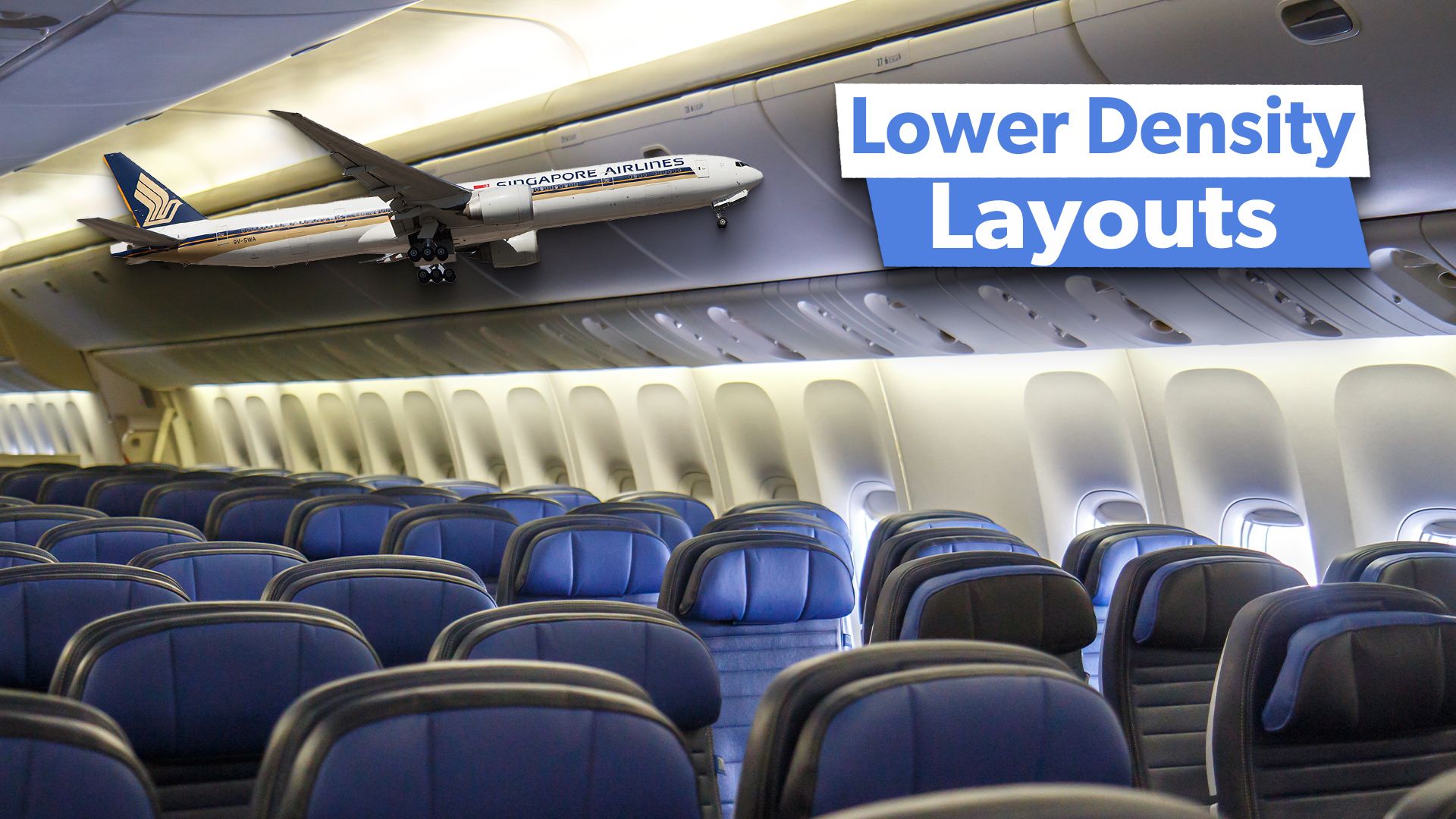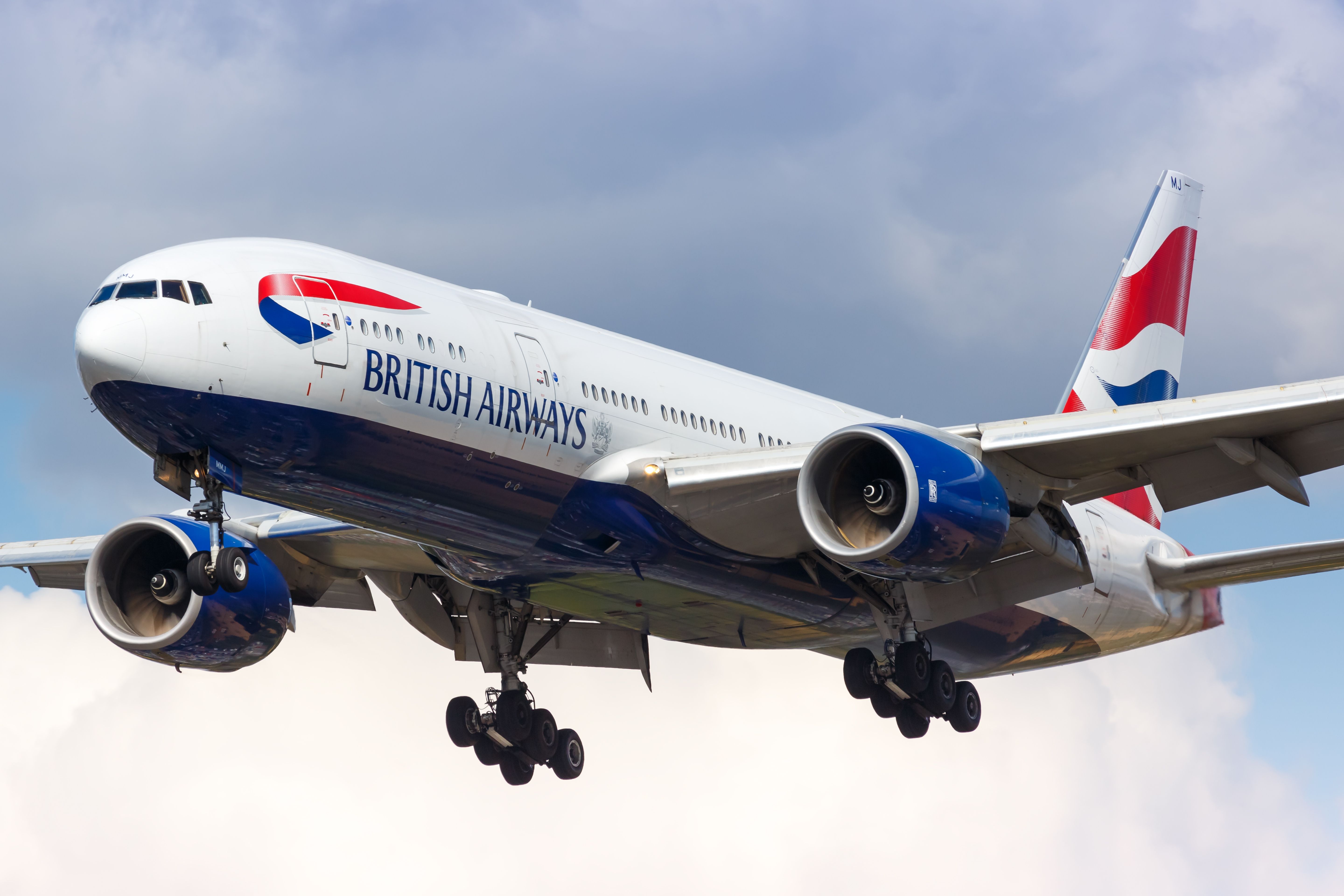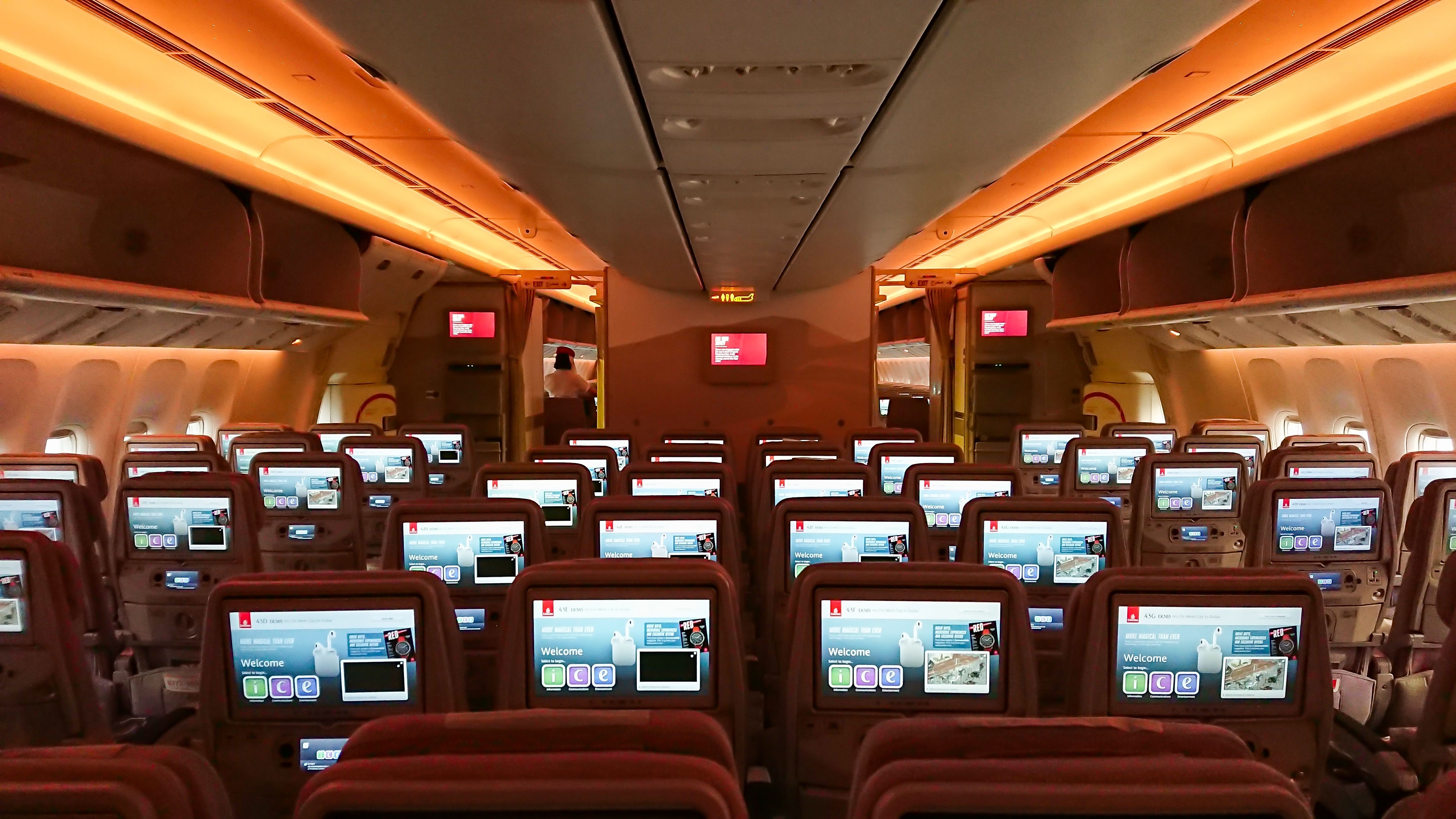Many in aviation may recall the marketing of the Airbus A350
as the XWB, which is an acronym for Extra-Wide-Body. Clearly, this was a marketing scheme as the A350 is not the airliner with the widest fuselage. That is a title that belongs to the Airbus A380
. In fact, the A350’s cabin width is significantly less than its closest competitor, the Boeing 777
.
Many frequent fliers may remember the days when most 777s were configured with 9-abreast seating in economy. Sadly, those days are gone, and many operators of the Boeing 777 have configured their cabins to 10-abreast seating. This causes us to question who still operates the 777 with 9-abreast seating in basic economy, and what should we expect from the Boeing 777X in this regard?
Photo: Markus Mainka | Shutterstock
The 777’s cabin dimensions
The Boeing 777 was designed from the start to have a wide cabin comparable to the size of the Boeing 747
. The interior cabin width was designed to be 19ft 3in across compared to the 747’s cabin width of 20ft. This made the 777 unique among widebody twins at the time. The large windows, lofty ceilings, and huge luggage bins that swept smoothly away gave the perception of space and airiness. According to Boeing:
“A 1992 Industrial Design Excellence award was presented for its 777 passenger cabin. This [was] the first time the Industrial Designers Society of America honored an airplane interior.”
In an airplane designed for long-haul, personal space becomes important to passengers, and the 777 did not disappoint in this area. Though 10-abreast seating was given as an option in the early days of the type’s operations, most airlines chose to configure their new 777s with the standard 9-abreast seating in economy.
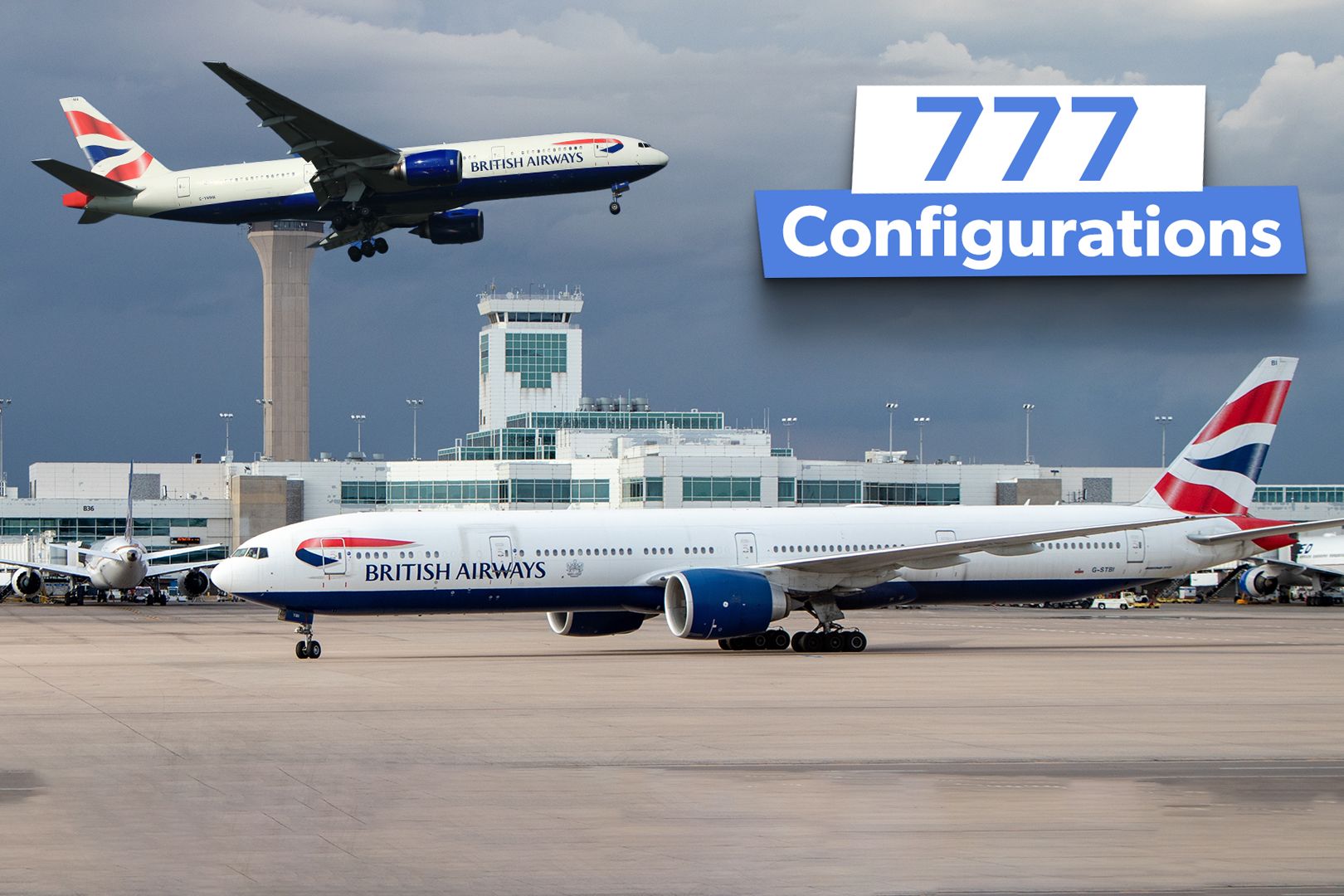
Related
How Does British Airways Configure Its Boeing 777s?
The UK flag carrier has a wide range of layouts, particularly on its Boeing 777-200ER jets.
Many airlines like British Airways
, Emirates
, Singapore Airlines
, and United Airlines
chose to arrange their economy cabins in a 3-3-3 configuration. Others, such as American Airlines
and Malaysia Airlines
opted for a 2-5-2 layout. United Airlines chose this configuration for its domestic 777s.
All Nippon Airways
chose to configure their aircraft with an interesting 2-4-3 seating arrangement. Overall, the 9-abreast layout allowed for more personal space and wider aisles. As a result, the Boeing 777 was a favorite with frequent fliers and remains popular with passengers to this day.
The move to 10-abreast
Sadly, space and comfort come at a cost. Airlines are keen to squeeze as much profitability out of their operations as possible and the argument for 10-abreast seating on Boeing 777s began to take hold with more and more airlines choosing to reconfigure their aircraft to a 3-4-3 layout. USA Today noted that by 2015 nearly half of all customers taking delivery of 777s were choosing the 10-abreast seating configuration. Airlines began to introduce 10-abreast seating, including the likes of:
The trend has continued.
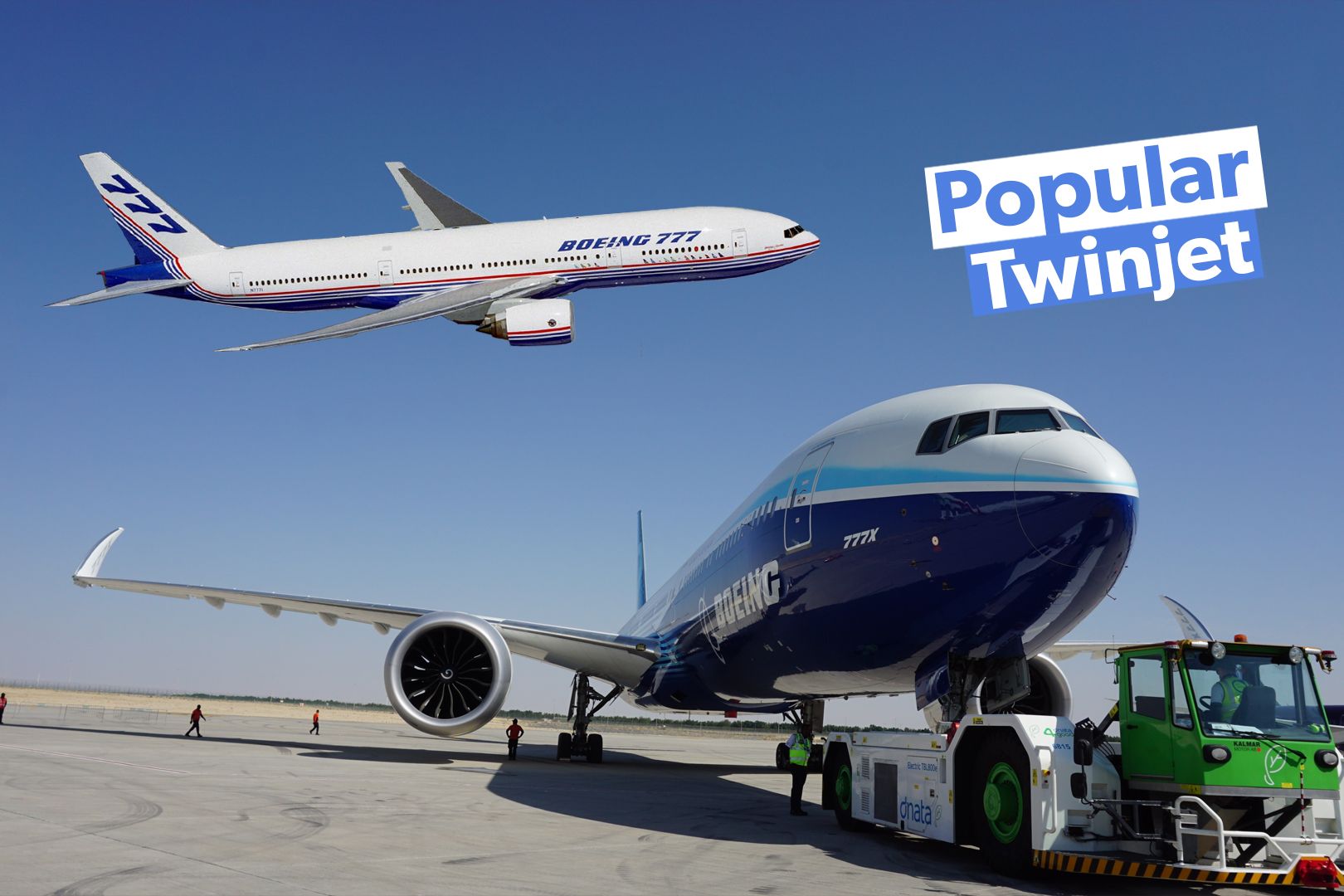
Related
The Story Of The Boeing 777 Family
The Boeing 777’s story began in the 1980s and will continue for years to come as Boeing develops the next generation Boeing 777X.
This change to a denser seating configuration, among many factors, allows airlines to reduce their cost per seat mile (CASM). The move improves profit margins, but it lessens passenger comfort. According to Airline Reporter, airlines are quick to argue that with reduced CASM it is possible to pass these savings onto passengers in the form of cheaper airfares. But airfare trends do not seem to indicate this. Sadly, 9-abreast seating on a Boeing 777 is no longer normal.
Photo: Doc Huy Nguyen
Airlines that still offer 9-abreast seating on their Boeing 777s
While many airlines chose to reconfigure their 777s to a denser seating arrangement, some airlines still offer 9-abreast in economy. A Sam Chui article notes that several airlines still operate Boeing 777s with 9-abreast seating. Though this list is not exhaustive, most of these carriers are in the Asia Pacific region. Air China
, ANA, EVA Air, Japan Airlines
, Korean Air
, Singapore Airlines, and Thai Airways
have retained the more comfortable seating.
Other carriers such as Ethiopian Airlines
, EL AL
, and Saudia
have also bucked the trend. There are some, like Air India
, Turkish Airlines
, and Biman Bangladesh Airlines
that have 9-abreast seating in their 777s but have a tight seat pitch of 31 inches.
A key thought here is to remember that comfort is not always guaranteed by the number of seats per row. Airlines choose different configurations and seats for their aircraft. A savvy traveler may find it useful to research the configuration and seating on a particular airline’s flight before purchasing a ticket.
Websites such as aerolopa.com or seatguru.com allow anyone to browse the seat maps of airlines and learn valuable information such as number of seats per row, width of seats, seat pitch, and a variety of other factors concerning passenger seating comfort on a particular aircraft type.
What about the 777X?
Boeing has made many innovative changes that will make the 777X an industry-leading airplane for long haul comfort. One of these changes is that the manufacturer has shaved out an additional 4in of internal cabin width though the fuselage diameter remains the same. This continues the 777’s legacy of space and comfort. Aircraft Interiors International noted that the 777X Sky Architecture and cabin design received recognition for the 2020 Crystal Cabin Award. Though airlines are quiet about the seating configurations that are planned for these planes, it seems that 10-abreast will be the standard, with Mainly Miles reporting that even Singapore Airlines will utilize a 3-4-3 layout in economy. The normal layout for the 777X seems to be confirmed, as Boeing advertises:
“In economy class, airlines can delight passengers with premium economy comfort in a nine-abreast configuration. At 10-abreast, every passenger can count on a standard economy comfort seat.”
Someone may take this comment in a variety of directions, but one thing seems fairly certain; 10-abreast is here to stay.
The Boeing 777 has an award-winning cabin design that has served airlines and their customers well for nearly thirty years. While it was more common for the type to be configured with 9-abreast seating, many airlines have chosen to move to 10-abreast seating to increase the economic benefits of operating the 777. There are still several airlines that have maintained the 9-abreast configuration, but 10-abreast has become more common. It is also highly likely that 10-abreast will be the standard economy layout on the 777X.
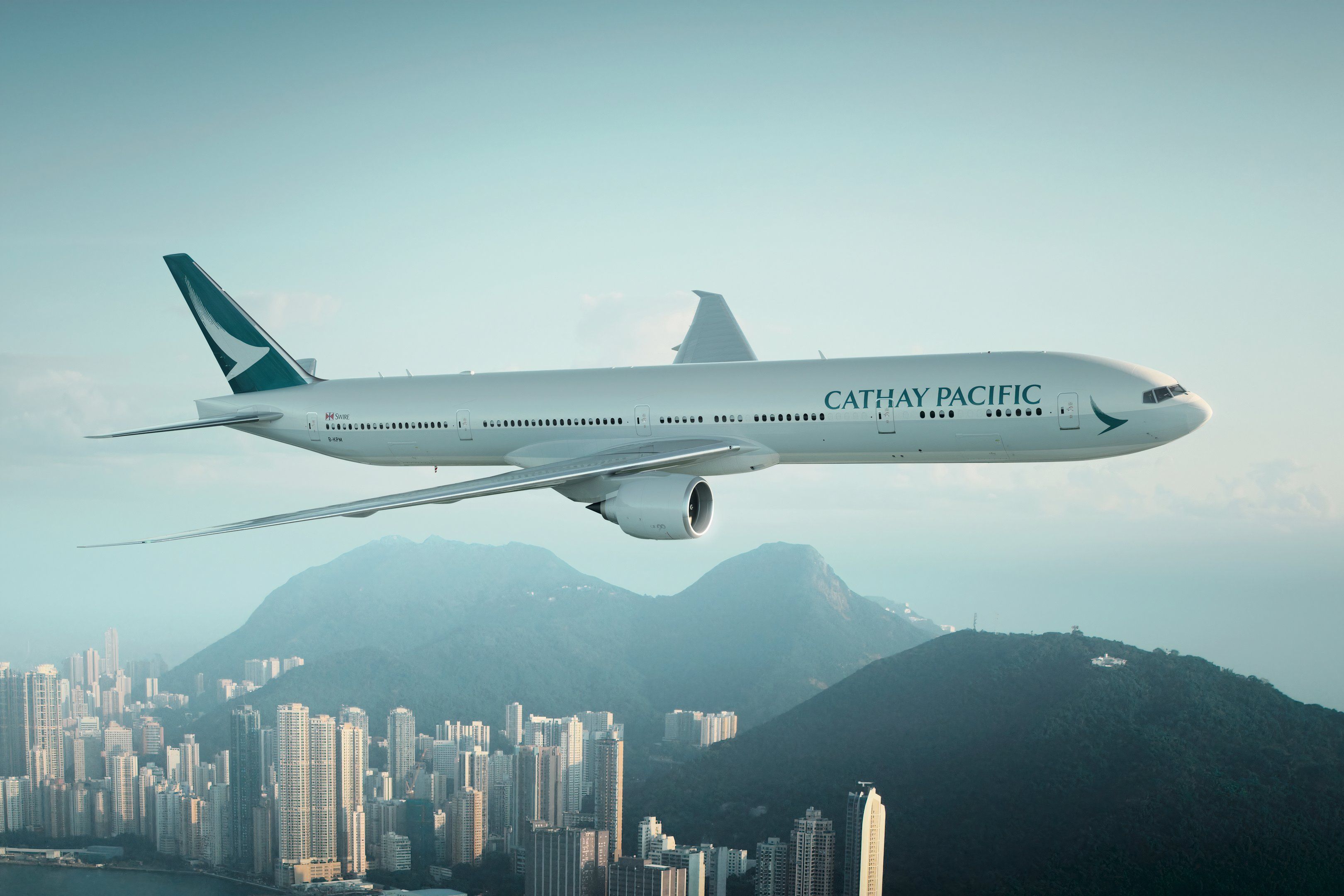
Related
On Which Routes Should Cathay Pacific Deploy Its 777Xs?
Cathay Pacific has 21 777-9 aircraft on order. The 777-9 is set to replace the 777-300ERs in its fleet. With a range of over 7,285 nautical miles (13,492 km), the 777-9 can cover routes currently served by the 777-300ER, such as those to Los Angeles. What are your thoughts?
Disclaimer: The following is a statement shared by one of our readers and does not necessarily reflect the views or ideas of our publication.

